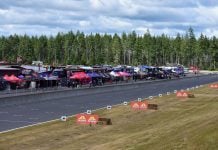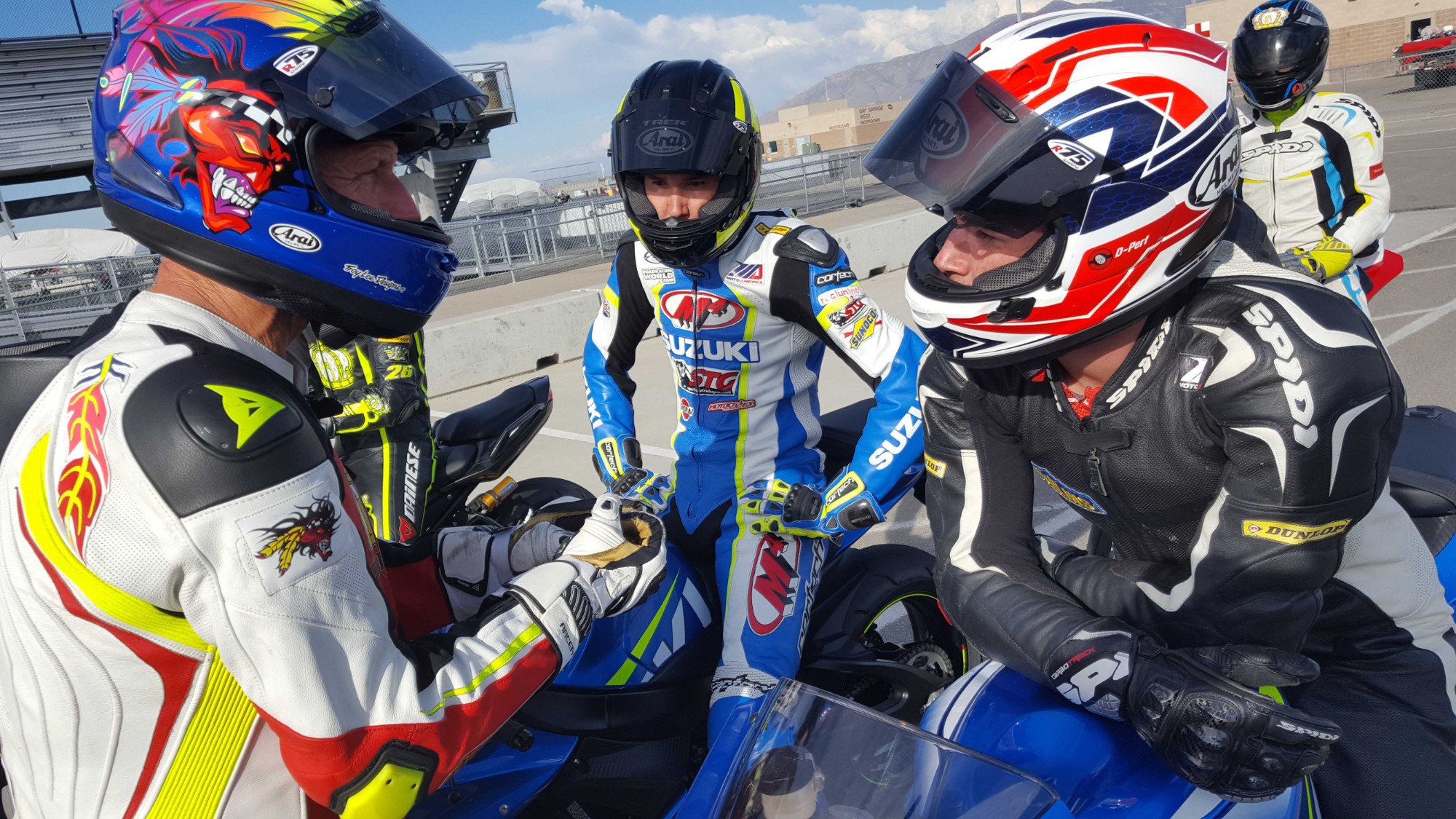To read more articles like this one originally published in the October 2016 print issue of Roadracing World, subscribe to Roadracing World.
Brought you by Dunlop Motorcycle Tires. Dunlop is the largest supplier of original equipment and replacement motorcycle tires in the U.S. and the only manufacturer of motorcycle tires in North America. For more information, visit DunlopMotorcycleTires.com.
The 11 things you can do to improve your riding, starting today. This is how it’s done.
By Ken Hill
As both a motorcycle coach and former racer, one question I’m often asked is what I enjoy more—riding or teaching. The answer is both, equally. I love riding motorcycles. No other sport combines the same degree of physical, mental, and technical skills that are required to operate a motorcycle. While I love riding, teaching allows me to share this passion by facilitating pathways for other riders to reach their fullest potential. I don’t train “racers” or “street riders”—I simply teach people how to be better motorcycle riders. The correct techniques are the same for everyone, no matter what or where you ride. If you want to become a better rider, these 11 habits are the place to start.
1) Ask yourself, “Do I want to improve?” True progress requires grit and discipline—there are no shortcuts. To do it, you have to DO IT. Superficial fixes might provide the temporary illusion of success, but never cut it in the long run. Stop being passively involved and instead take action to improve your skills. Set a goal for your riding. Then commit to achieving it.
2) What’s holding you back the most? Identify the single biggest thing that is stopping you from reaching your riding goal, regardless of what, where, or how you ride. If you aren’t sure what’s holding you back, then ask yourself, “What am I not good at?”
3) Are your riding expectations realistic? If you think that a MotoGP bike or Italian supermodel girlfriend would eliminate all your riding deficiencies, yet you aren’t able to complete a single lap with your bike hitting every apex—think again. Instead, start working on something small that leads to something big. Identify a skill you can begin practicing today.
4) Listen to an expert voice. You need an objective opinion from a trained professional, period. Read all the Internet forums you want, but if the voice you are listening to can’t ride AND doesn’t have the credentials of coaching riders at the top of the sport, pass. Even 9-time World Champion Valentino Rossi has hired a coach, because he knows he can’t always objectively assess his own riding.
5) Every day, set aside time for deliberate practice. As with any serious enterprise in life, you have to work on your riding actively and conscientiously to get better at it. If you want to improve your braking, start by identifying specific drills that will help you reach your goal. Once you have made your plan, apply and follow it daily, even where you think it doesn’t matter. Practice deliberate techniques while driving your car to work or riding your bicycle—it all adds up. How you do anything is how you do everything. Hey, I apex every corner correctly while pushing a shopping cart at the grocery store!
6) Understand and master the order of the sport. Yes, there is a correct method for learning how to ride a motorcycle. The order of the sport comprises the following six training fundamentals:
i. Bike placement
ii. Vision and focus
iii. Motor controls
iv. Brakes
v. Turn-in rate and turn-in point
vi. Body position and body timing
7) Develop a theoretical understanding of riding a motorcycle. Understanding how and why your motorcycle reacts to specific inputs greatly simplifies the skills development process. For example: Deceleration in a corner while maintaining the same lean angle will cause your turning radius to decrease, while if you accelerate, it will increase. Training your brain off the bike pays enormous dividends on the bike.
8) Practice skill objectives—the physical inputs that tell your motorcycle what to do. Many essential techniques can be practiced at a standstill, such as initial and final braking inputs, initial throttle, and visual scanning. The advantage of working on these skills at a standstill is that your brain is fully focused on the task at hand, which greatly reduces the learning curve when you then apply that skill, while the bike is moving. While riding, the biggest tip is to work on being present: Pay attention to every moment as it unfolds, like individual frames in a video. Isolating your thoughts (being present) to work on one skill at a time, will bring understanding and muscle memory much faster than not being in the moment or trying to learn multiple skills at once.
9) Ask yourself, “How am I doing?” Track your progress by establishing personal report cards that serve as benchmarks for different aspects of your riding. Start with a basic daily report card: “Did I do something to better my riding skills today?”
10) Embrace the reality that not every day is a good day. This awareness is essential to overcoming obstacles. When something goes wrong, learn from it and move on. Don’t allow yourself to be derailed from your path. Every morning presents a chance to improve on yesterday. The same principle applies to your riding: Miss an apex? Get over it, and hit the next one.
11) Stop screwing with your bike. Yes, it’s fun to work on your bike, but your riding technique has a significantly bigger impact on your overall performance than that titanium shock spring you’ve been eyeing. You are the single largest variable on your motorcycle: Invest in yourself.

Ken Hill in the classroom at Chuckwalla – Photo by David Swarts.
About Ken Hill
One of the top motorcycle riding coaches in the United States, Ken Hill has had motorcycles in his life for over 20 years and currently owns Ken Hill Coaching, based in Northern California. Hill has coached multiple national championship-winning riders and has worked as a lead instructor at some of the top riding schools in the country, most recently spearheading the Rickdiculous Racing Rider Development Camp. Hill also brings his riding philosophy to the world of business and professional coaching. He has been a guest speaker at Yale University, Nike, and Yelp, among other organizations. Ken Hill works with riders of any skill level and can be reached at [email protected].
The Ken Hill Coaching podcast series is an introduction to Ken’s coaching methods based on the order of the sport, a codified approach to skills development both on and off the bike. Tune in and listen on Soundcloud or iTunes http://khcoaching.com/podcasts
To read more articles like this one originally published in the October 2016 print issue of Roadracing World, subscribe to Roadracing World.






